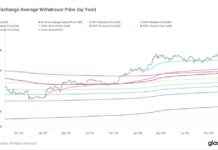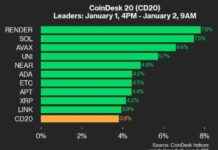North Korea’s Elaborate Crypto Laundering Tactics Unveiled
North Korea’s recent cyber heist of $1.5 billion from Bybit has shed light on the elaborate money laundering tactics employed by the reclusive nation. The Hermit Kingdom faces unique challenges in offramping its substantial hauls due to the inability to deposit funds on major exchanges like Binance or Coinbase, which implement strict Know-Your-Customer (KYC) checks. Instead, North Korea relies on a sophisticated network of over-the-counter (OTC) brokers to launder stolen assets, according to Ari Redbord, global head of policy at TRM Labs.
North Korea’s Global Money Laundering Network
Redbord, a former senior advisor to the U.S. Treasury, revealed that North Korea leverages Chinese money laundering organizations and other countries with lax regulations to convert crypto loot into government-issued currencies like the Chinese renminbi or the U.S. dollar. Despite its efforts, North Korea has faced challenges offramping billions in value, with TRM estimating that the nation has stolen over $5 billion since 2017. This staggering amount translates to at least $51 million needing to be offramped each month, exceeding the capabilities of its money laundering network.
The situation poses a unique dilemma for North Korea, akin to the challenges faced by notorious drug lord Pablo Escobar in storing his vast cash reserves. The majority of the stolen ETH from the Bybit hack has already been converted to Bitcoin via THORswap, a protocol facilitating swaps between Ethereum and Bitcoin networks. To obscure the flow of funds, North Korea funnels the assets through mixers like Wasabi and CryptoMixer, which process a limited amount daily, potentially causing bottlenecks in offramping.
The Aftermath of Money Laundering
Once funds are successfully offramped through OTC brokers, blockchain analysis firms like TRM lose track of the trail, leaving the investigation in the hands of governmental agencies such as the FBI, HSI, and IRS-CI. These agencies utilize various intelligence-gathering tools, including human and signals intelligence, to enhance their investigations. While some stolen funds may be recovered, as seen in the Colonial Pipeline ransomware attack, where the DOJ retrieved 85% of the ransom paid to cybercriminals, the process is complex and requires significant political capital.
U.S. agencies, in collaboration with Japanese and South Korean authorities, closely monitor the network of Chinese shell companies used by North Korea for money laundering. Despite challenges in jurisdiction and diplomatic relations, the U.S. government can employ provisions under the USA PATRIOT Act to compel compliance from foreign banks involved in illicit activities. This strategy, while effective in some instances, requires careful consideration due to its potential impact on the global economy.
In the ever-evolving landscape of cybercrime and money laundering, the battle between law enforcement agencies and illicit actors like North Korea continues. The intricate web of financial transactions and covert operations underscores the need for international cooperation and innovative strategies to combat emerging threats in the digital age. As the world grapples with the implications of unchecked cybercrime, the role of regulatory bodies and law enforcement agencies becomes increasingly vital in safeguarding the integrity of the global financial system.
Tom Carreras, a seasoned journalist covering markets, bitcoin mining, and crypto adoption in Latin America, offers a unique perspective on the complex interplay between cybersecurity, financial crime, and international relations. With a keen eye for detail and a passion for uncovering untold stories, Carreras brings a human touch to the intricate world of crypto laundering and geopolitical intrigue, shedding light on the hidden forces shaping our digital future.


















